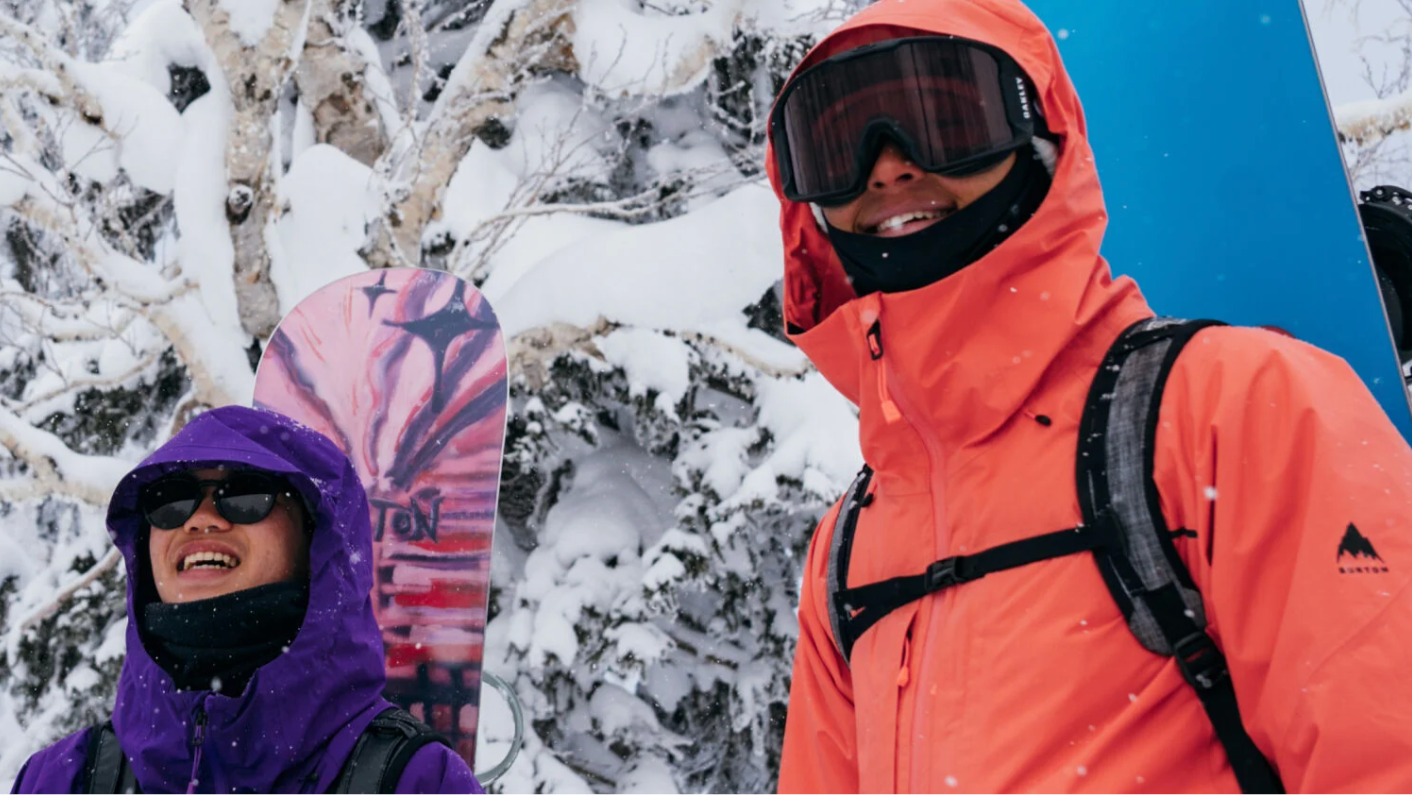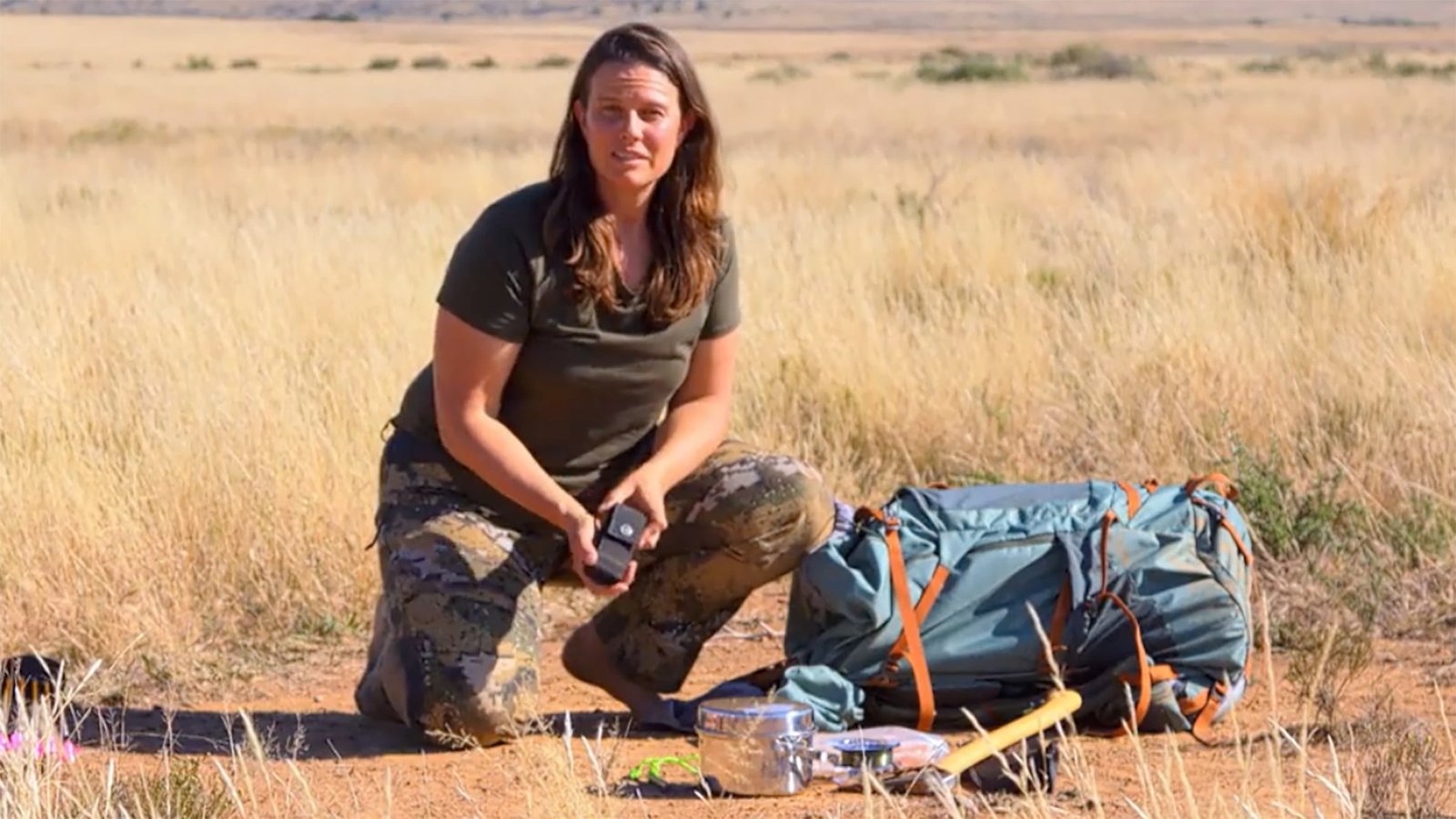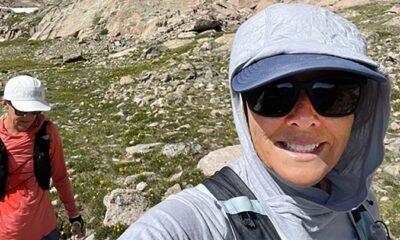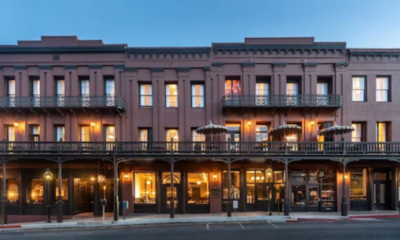Published August 1, 2025 01:04PM
Destinations & Things To Do
Burton’s Huge Summer Sale Will Help You Stave off the Summertime Blues

If you buy through our links, we may earn an affiliate commission. This supports our mission to get more people active and outside.Learn about Outside Online’s affiliate link policy
(Photo: Courtesy of Burton)
Snowboard season may still be a few months away, but if you’re anything like us, you’re already counting down the days until that first chairlift ride up the mountain. Since we can’t hit the slopes just yet, we’re spending these warmer months organizing the gear closet, reminiscing on our most epic days out last year, and reading all of the snow-related inspo we can find.
As we take inventory of our gear, we’re simultaneously building a wish list of all the new apparel and equipment to buy for the upcoming season. And for all the wish-list-makers out there, we have good news: the Burton Summer Sale is has just started and there are markdowns across all of the brand’s categories, including jackets and bibs, bindings, boards, boots, and more. This means you can knock a few things off your list right now — no need to wait until October to start shopping for new snowboarding gear. Keep reading to find our favorites from the sale, or head straight to Burton and see for yourself.
Burton Family Tree 3D Deep Daze Flat Top Snowboard
One of our favorite snowboards for 2025, this is an ideal choice for powderhounds that are always the first ones down the mountain after a big storm. The board provides constant energy and float, and was much more versatile on the mountain than we expected it to be. But the real reason it stands out is its innovative channel technology. The unique 3D base wowed our testers, with one of them claiming that the 3D Deep Daze “pumped, bounced, and buttered through powder like a peyote-popping porpoise on a vision quest.”
Burton [ak] Hover GORE‑TEX 3L Stretch Jacket
GORE-TEX isn’t the only waterproof tech on the mountain, but it has certainly become the go-to for boarders who are keen on staying dry all day long. The Hover jacket is a light, packable, waterproof shell made for conquering the backcountry. It stows small when you’re following the skin track up the hill and keeps the conditions at bay on the way back down.
Anon M4S Goggles (Toric) + Bonus Lens + MFI® Face Mask
This bundle has everything you need to protect your eyes and face on the mountain. The M4S goggles use cylindrical lenses for a wide field of view and come with a bonus lens you can swap out on the go thanks to Anon’s Magna-Tech magnetic lens interface. The bundle also includes a magnetic face mask to keep you warm on the coldest days. The M4S frames are designed for folks with medium-sized faces and come with a microfiber goggle bag to keep them protected when you’re not wearing them.
Burton [ak] Kalausi GORE-TEX C-KNIT 3L Bib Pants
If you’re a splitboarder that needs their pants to be equal parts stormproof and breathable, the Kalausi bib pants are a treat. The three-layer GORE-TEX material is fully waterproof while still allowing for hot air to move away from your skin on tough climbs. Once you reach the summit and prepare to turn back down the hill, the impenetrable outer membrane will keep you completely dry and comfortable.
Burton Futuretrust Insulator Vest
When the cold really starts to hit, your mid-layers make all the difference. The Futuretrust Insulator Vest, one of Burton’s many gender-neutral offerings, is a low-bulk option that packs a huge punch warmth-wise. A lightweight Pertex shell is paired with 200g ThermacoreEco fill to keep you warm without making you feel like a marshmallow. Bonus points for the zippered side vents that let your torso breathe when you work up a sweat.
Destinations & Things To Do
The Laugavegur Trail | Day 0

Woke Up in the Fog
It’s Day 0. The trail hasn’t started yet, but I have. I woke up at 6:00 a.m., rolled out of my tent at 6:15, and stepped into a foggy Icelandic morning—51 degrees and misty. A little pain in my knees when I stood and surprisingly no stiffness anywhere else. That’s rare. Normally, pavement walks ruin me. But today? I feel… good.
I finished charging my devices, with them both off to charge faster, sipped coffee and ate leftover mapo tofu and tried to pack while racing the clock. My bus to Landmannalaugar was set for 7:45 a.m. I arrived at 7:37 a.m., thanks to the internal video producer clock I’ve never been able to turn off. My pack was a disaster, but who cares? I’d be hiking with just a daypack today. And ending the day in a hot spring.
Doing the Math
While scarfing down breakfast and sorting my gear, I found myself reflecting on how many Europeans I’ve met out here—and how often I’ve had to convert units just to keep up in conversation. Distance, elevation, temperature… it’s a whole different language. So here are my quick-and-dirty shortcuts for trail talk:
-
Celsius to Fahrenheit: Double the Celsius and add 30. It’s not perfect, but it’s close enough for weather chat.
-
Kilometers to Miles: Divide the number by 10, then again by 2, and add the two results. For example, 100 kilometers is 100/10= 10 and 100/2= 50. Then 10 + 50 = roughly 60 miles.
-
Meters to Feet: Multiply by 3 for a rough estimate.
It’s not perfect but good enough to hold your own in an international hiking crowd.
The Bus Ride: Fog Outside And In
About 45 minutes outside Reykjavík, the fog rolled in so thick it erased everything outside the bus window. Which left me alone with the inside of my head—a place that was suddenly loud.
What if I get too cold? What if I lose the trail in the fog? What if my hands freeze? What if I get injured?
If your brain does this, too—spiraling just when you’re on the brink of something exciting—you’re not alone. That’s what fear does.. It just comes up at the worst possible time.
But somewhere in that foggy, frantic moment, my mind reached back to a hike I did with my friend Amanda a couple months before. Seven miles in the pouring rain. It was soaking, squishy, miserable—and the perfect mental training for what I’m doing now. Funny how the brain buries those moments until you really need them. This is what preparing for something big is all about: not just the gear and the fitness, but the quiet work of building up resilience when no one’s watching.
Still, as the miles ticked on and the fog didn’t lift, my thoughts drifted to something even heavier.
A year ago—July 2024—I wasn’t out hiking or prepping for any grand adventure. I was glued to YouTube, binging long-distance trail videos and running 5k’s. I felt… stuck. Flat. Not like myself. And I started to notice a pattern: when I wasn’t hiking regularly, my energy dipped. My joy dimmed. I wasn’t depressed exactly, but something was off—and I knew it.
I knew I needed something to look forward to. Something that would nudge me back to life. Something to train for—not just physically, but emotionally. But there was a catch: my partner wanted a milestone birthday trip to Japan in 2025. That had always been the big plan. And I supported it fully.
So I quietly tucked my Iceland idea into the “someday” file and focused on being supportive. On being realistic. But the truth is, I was also silencing something vital in myself. And at the time, I didn’t realize how much that would matter.
Torn Between Two Dreams
By November, I had strategically saved enough money to cover flights to Japan for both of us. I was serious about showing up for her plan. But I still felt pulled—by the Icelandic Highlands, by the trails, by the version of myself I hadn’t seen in a while. I started researching the Japanese Alps, hoping maybe there was a way to make both things work: her vision and my need to hike something hard and beautiful.
It almost worked. I thought I’d found the perfect compromise. But then the dates shifted. First we looked at May, then September, then maybe March. All totally understandable—there were a lot of moving parts to juggle on her end. But each change made it harder for me to keep the momentum I’d built. My anxiety started to climb. I felt tat I was going to miss out on a hike I knew I needed.
Iceland’s hiking season is brutally short. And every new timeline made it feel like my window was closing. I finally asked if March was the plan, and when she said yes, I made a decision. Hiking the Japaneses Alps in March is not an option and I needed something locked in—something I could plan around, train for, and keep my focus on. Not to mention, it was February. So, I booked my July trip to Iceland.
That meant letting go of Japan. Letting go of the plan. And no matter how necessary it felt, it didn’t sit easy.
Gratitude and Guilt
Now, as the bus winds toward the Highlands, I’m flooded with mixed feelings. I’m deeply grateful to be here. This place already feels like exactly what I needed. But guilt? Yeah, that came with me, too.
After everything was booked and training was underway, my partner decided on Japan in October. It’s a gorgeous time to visit—but a tough season for hiking the Alps. That’s me trying to make it feel like less of a loss. But it still stings.
I feel guilty she’s not here.
Guilty I won’t be there.
Guilty that I needed this so badly, I prioritized it over her needs and wants.
Here’s the thing: guilt often shows up when we’re doing something brave and self-preserving. It likes to confuse the two. It makes us question whether honoring our own needs means we’re failing someone else. But that’s rarely the truth.
It’s easy to say, “You should never lose yourself in a relationship.” But it’s much harder to know when and how to speak up for what you need. Maybe that’s just a me thing.
This trip doesn’t mean I’ve stopped supporting her. It means I chose to support myself, too.
And I think that’s okay. Even if the guilt still rides along sometimes.
The bus keeps rolling forward. The fog’s still thick. But I’m learning that it’s possible to carry conflicting emotions in the same backpack: gratitude and guilt, excitement and sadness, clarity and confusion. You don’t have to have it all sorted before you take the first step.
Sometimes, you just go anyway.
When the Highlands Whisper Back
Something shifted the moment we turned off the main road and onto Iceland’s rugged F-roads. The bus bumped along through thick fog and past jagged lava fields, and with each mile, the grip of guilt began to loosen.
For the first time in a long time, I felt present.
The sun burned off the fog and the black and green mountain started to appear and my world was now focused on jaw dropping beauty. Scenery I had never seen before. In that moment, the Icelandic Highlands whispered louder than the voices in my head. And I finally allowed myself to listen.
Camp Conversation
After setting up camp at Landmannalaugar and inhaling a quick lunch, I met Todd and Katya—an adventurous couple from Toronto who got engaged in Patagonia on the O Trek (which is my 2027 hike). We quickly went from trail talk to real talk: healthcare, racism, politics. When I invited them to visit me in the Smokies, they politely declined—at least until our current president is out of office. It was the kind of honest, open exchange that reminds you how different—and similar—our lives can be across borders.
Just a “Quick” Hike
Later that afternoon, I headed out for what was supposed to be a mellow 4-mile loop—just enough to stretch my legs after the long travel day. I followed trail markers out of Landmannalaugar, winding through a surreal landscape of steaming vents, jagged ridgelines, and neon-green moss. The terrain looked like a mash-up of Mars and Middle Earth.
Following the Sound
The silence in Iceland is insane. No bugs, no plans and at the moment no wind. After a while, I heard it—the unmistakable roar of glacial runoff echoing through a nearby valley. I trusted my ears, dropped into the valley, and hiked about a mile and a half until I found a perfect spot by the water to have a snack. Just me and the rush of ice-cold melt water carving through stone.
Into the Mist And Fog
On my way back, I spotted two hikers and headed toward them—then noticed a sign pointing to a mountain trail. Naturally, I climbed. As I reached the top, the fog closed in like a curtain. No visibility. No trail in sight. Just white. I paused, unsure of my next move—until a group of local hikers appeared like ghosts out of the mist. They knew the way and pointed me in the right direction. With their help, Gaia GPS, and a little faith, I found the path down. Five minutes into the descent, the fog cleared like it had never been there at all.
A Longer Welcome Than Expected
The trail led me through a lava field, along another glacial river, and finally back to camp. What was supposed to be a quick loop turned into a 9.5-mile adventure—and the perfect way to meet Iceland on its own wild terms.
Tent Time
Back at camp, I made a decision: no more socializing tonight. I cooked in the vestibule (boiled water counts as cooking, thank you very much) and ate a quinoa bowl topped with crunched Takis and Icelandic chocolate for dessert. Not gourmet, but it hit the spot.
I let my phone charge while I wrote a bit in my journal. I popped a sleeping pill, set no alarm, and gave myself permission to rest.
Tomorrow is a seven-mile day. I know I can do that. There’s no pressure. The sun never really sets here, so I’ll walk when I’m ready.
Right Where I’m Supposed to Be
Today’s hike was longer than planned, but also exactly what I needed. I didn’t think about work or bills or anything outside this mossy, volcanic wonderland. I was just here. In my body. On this land. Moving forward.
Day 0 reminded me that the trail begins before your first step. It starts in your doubts, your daydreams, your bank accounts, your dinner conversations. It begins when you say, “I think I want this,” and someone replies, “I know you will.”
And now? I’m here. On the edge of a journey I’ve been building toward for months. And it feels really, really good.
Destinations & Things To Do
World’s Best Things To Do, According To TripAdvisor

Globetrotters seeking exceptional destinations can now consult Tripadvisor’s eagerly anticipated 2025 Travelers’ Choice Awards. The awards highlight the world’s top attractions and experiences based on millions of user reviews collected between April 2024 and March 2025. The prestigious annual ranking by TripAdvisor reveals Barcelona’s Basílica de la Sagrada Familia has claimed the top spot among global attractions, followed closely by Paris’s iconic Eiffel Tower.
American travelers might be surprised to discover that Florida’s NASA Kennedy Space Center Visitor Complex ranked as both the top U.S. attraction and third globally, outshining theme park giants like Disney World. TripAdvisor President Kristen Dalton emphasized the platform’s role in helping travelers create lifelong memories, noting that whether visitors “crave adrenaline or prefer to take things slow,” the awards showcase experiences that transform ordinary trips into extraordinary adventures.
The rankings reflect a global appetite for cultural immersion and historical exploration, with iconic landmarks dominating the attraction categories while immersive experiences topped the experiential lists.
Top Global Attractions Worth Your Bucket List
Europe continues to dominate the global attractions list with six of the top ten spots. Beyond Barcelona’s Sagrada Familia and the Eiffel Tower, travelers highly rated the Louvre Museum in Paris, the Anne Frank House in Amsterdam, and architectural marvels in Milan and Seville. Asia claimed two positions with Cambodia’s ancient Angkor Wat and China’s Mutianyu Great Wall, both of which earned top honors. For Americans staying closer to home, the NASA Kennedy Space Center offers an educational yet thrilling experience that rivals international destinations.
Cultural Experiences Lead TripAdvisor Rankings
Florence’s Renaissance & Medici Tales tour earned the title of world’s best experience, showcasing travelers’ appetite for immersive cultural explorations. European experiences claimed half of the global top ten, with London’s Historical Pubs tour, Amsterdam’s canal cruise, Madrid’s Three Cities tour, and Istanbul’s private guided tour all earning recognition. Asia secured impressive positions with Vietnam’s Ninh Binh tour and Indonesia’s Ubud exploration ranking highly.
American Adventures Focus On Natural Beauty
Hawaii’s Grand Tour Around Island experience topped the U.S. experiences list, offering visitors 16 spectacular locations plus snorkeling opportunities. Water-based adventures proved particularly popular, with Miami’s private boat tours, Honolulu’s parasailing experiences, and Florida’s clear kayak tour of Shell Key Preserve all earning recognition. Urban explorers favored Chicago’s Architecture Center River Cruise, New York’s 9/11 Memorial tour, and Philadelphia’s adults-only Dark Philly Night Tour.
Top 10 Global Attractions According To TripAdvisor
- Basílica de la Sagrada Familia, Barcelona, Spain
- Eiffel Tower, Paris, France
- NASA Kennedy Space Center Visitor Complex, Merritt Island, United States
- Louvre Museum, Paris, France
- Angkor Wat, Siem Reap, Cambodia
- Mutianyu Great Wall, Beijing, China
- Anne Frank House, Amsterdam, The Netherlands
- Sheikh Zayed Grand Mosque Center, Abu Dhabi, United Arab Emirates
- Duomo di Milano, Milan, Italy
- Plaza de España, Seville, Spain
Top 10 Global Experiences
- The Best Tour in Florence: Renaissance & Medici Tales, Florence, Italy
- Full-Day Ninh Binh Highlights Tour from Hanoi, Hanoi, Vietnam
- Blue Cave Small-Group Boat Tour from Dubrovnik, Dubrovnik, Croatia
- London Small Group Tour of Historical Pubs, London, United Kingdom
- All-Inclusive 90-minute Canal Cruise by Captain Jack! Amsterdam, The Netherlands
- Early morning Chichen Itza Tour: Cenote and Tequila Tasting, Cancun, Mexico
- Three Cities in One Day: Segovia, Avila & Toledo from Madrid, Madrid, Spain
- Grand Tour Around Island 16 locations plus Snorkeling, Honolulu, United States
- Best of Istanbul 1, 2, or 3-Day Private Guided Istanbul Tour, Istanbul, Türkiye
- Best of Ubud Full-Day Tour with Jungle Swing, Ubud, Indonesia
Destinations & Things To Do
On ‘Alone’ Africa, This Survival Tool Takes Center Stage

In the latest episode of ‘Alone’ Africa, a survivalist omits a crucial piece of gear and learns a tough lesson
Alone participants can bring ten pieces of gear with them (Photo: The History Channel)
Published August 2, 2025 05:55AM
What’s the most valuable survival tool that you can bring into the backcountry?
The answer you’ll get from a wilderness expert is likely to be “your intuition” or “your survival experience” or perhaps even “a good knife.”
But after watching 12 seasons of the outdoor reality show Alone, my answer has narrowed on a very specific item: the ferro rod. This small metal cylinder, made from the alloy ferrocerium, produces sparks when struck with steel.
For those unfamiliar with the rules of Alone, contestants are allowed to bring just ten items with them into the backcountry as they live off of the land for as long as possible. They choose their ten items from a master list made up of 60 or so gizmos, tools, and pieces of outdoor gear.
Every season, survivalists choose familiar items: a bow and collection of arrows, fishing line and hooks, saws, axes, plastic tarps, etc. The show publishes which items each survivalist chooses on its cast profiles page.
The ferro fire striker is, by my count, the second most-popular item that survivalists opts for, behind only the sleeping bag. And after watching the most recent episode of Alone Africa, I was again reminded why.
Another Survivalist Goes Home
(Spoilers Ahead!) During the seventh episode, which aired on July 31 and was titled “Echoes of Emptiness,” we finally saw Baha, the affable 50-year-old Kyrgyzstani-Canadian, tap out, departing the show after 18 days in the wild. His abandonment left just three contestants remaining: Nathan, Kelsey, and Katie.
One of Alone Africa’s biggest personalities, Baha lasted much longer than I predicted he would after I watched the first episode. In the season’s opener, Baha made a few curious decisions that placed him behind the eight ball. He decided to abandon his initial camping spot in favor of one two miles away. He decided to walk to the new spot during the heat of the afternoon, under the baking sun. And he chose to complete this trek despite not having any potable water.
When Baha reached his destination, he revealed another setback: he’d chosen not to bring a ferro rod into the Great Karoo desert, opting instead to rely on his skills with a bow-drill for creating fire.
It took Baha almost two days to successfully use this friction-based method to make an ember, which allowed him to finally boil drinking water.
Baha was just the sixth participant across Alone’s 11 traditional seasons (season 5 had survivalists work in two-person teams) to disregard the ferro rod. Nathan Donnelly (season 6), Matt Corradino and Colter Barnes (both season 8), Luke Olsen (season 10), and Jake Messinger (season 11) all left ferro rods at home.
What do all of these six have in common? All of them tapped out.
Overconfidence Leads to a Bad Decision
On Alone, having access to reliable fire is simply too important to ignore. Sure, some survivalists are talented with a bow and drill. But this method requires too much physical energy to complete, and is far less reliable than a ferro rod. During Alone seasons set in cold and wet locales, kindling eventually gets soaked by rain, rendering even the best friction setup useless.
Even in Alone Africa, the desert monsoons came in and drenched everything.
So, how do you maintain fire when everything is damp? Like the other six who tried Alone without a ferro rod, Baha had to find a way to keep his fire going ’round the clock. And at some point, this meant staying up all night to stoke the flames.
Time and again Alone, has shown that, in a survival situation, rest is almost as valuable as food. After working long days in the cold, survivalists need their recovery. And once Baha started staying up all night, his mood dropped, and his will to continue evaporated. No sleep = no mojo.
We’ve seen the ferro rod make and break participants in previous seasons. In season 1, Joe Robinet barely lasted 24 hours after he lost his ferro rod on the beach. In season 7, Shawn Helton also bailed after losing his.
During season 6, Nathan—arguably the heartiest survivalist that season—lasted a full 72 days in the wilderness despite not bringing a ferro rod. He instead allowed his fire to burn all day and night, sacrificing his sleep and recovery to that end. But eventually, the flames dried out the tree bows of his shelter. During the night his makeshift house caught fire, and he barely escaped with his life.
So, will Baha’s abandonment make the ferro rod a must-have for future participants? I have my doubts. One Alone alumnus told me that belief in one’s bow-drill skills is a common mindset with Alone cast members. Some of these people have a little too much faith in this skill.
And so long as overconfidence remains part of the human condition, some portion of Alone survivalists will continue to leave the ferro rod at home.
-

 Brand Stories2 weeks ago
Brand Stories2 weeks agoBloom Hotels: A Modern Vision of Hospitality Redefining Travel
-

 Brand Stories1 week ago
Brand Stories1 week agoCheQin.ai sets a new standard for hotel booking with its AI capabilities: empowering travellers to bargain, choose the best, and book with clarity.
-

 Destinations & Things To Do2 weeks ago
Destinations & Things To Do2 weeks agoUntouched Destinations: Stunning Hidden Gems You Must Visit
-

 Destinations & Things To Do1 week ago
Destinations & Things To Do1 week agoThis Hidden Beach in India Glows at Night-But Only in One Secret Season
-

 AI in Travel2 weeks ago
AI in Travel2 weeks agoAI Travel Revolution: Must-Have Guide to the Best Experience
-

 Brand Stories4 weeks ago
Brand Stories4 weeks agoVoice AI Startup ElevenLabs Plans to Add Hubs Around the World
-

 Brand Stories3 weeks ago
Brand Stories3 weeks agoHow Elon Musk’s rogue Grok chatbot became a cautionary AI tale
-

 Asia Travel Pulse4 weeks ago
Asia Travel Pulse4 weeks agoLooking For Adventure In Asia? Here Are 7 Epic Destinations You Need To Experience At Least Once – Zee News
-

 AI in Travel4 weeks ago
AI in Travel4 weeks ago‘Will AI take my job?’ A trip to a Beijing fortune-telling bar to see what lies ahead | China
-

 Brand Stories4 weeks ago
Brand Stories4 weeks agoChatGPT — the last of the great romantics













You must be logged in to post a comment Login